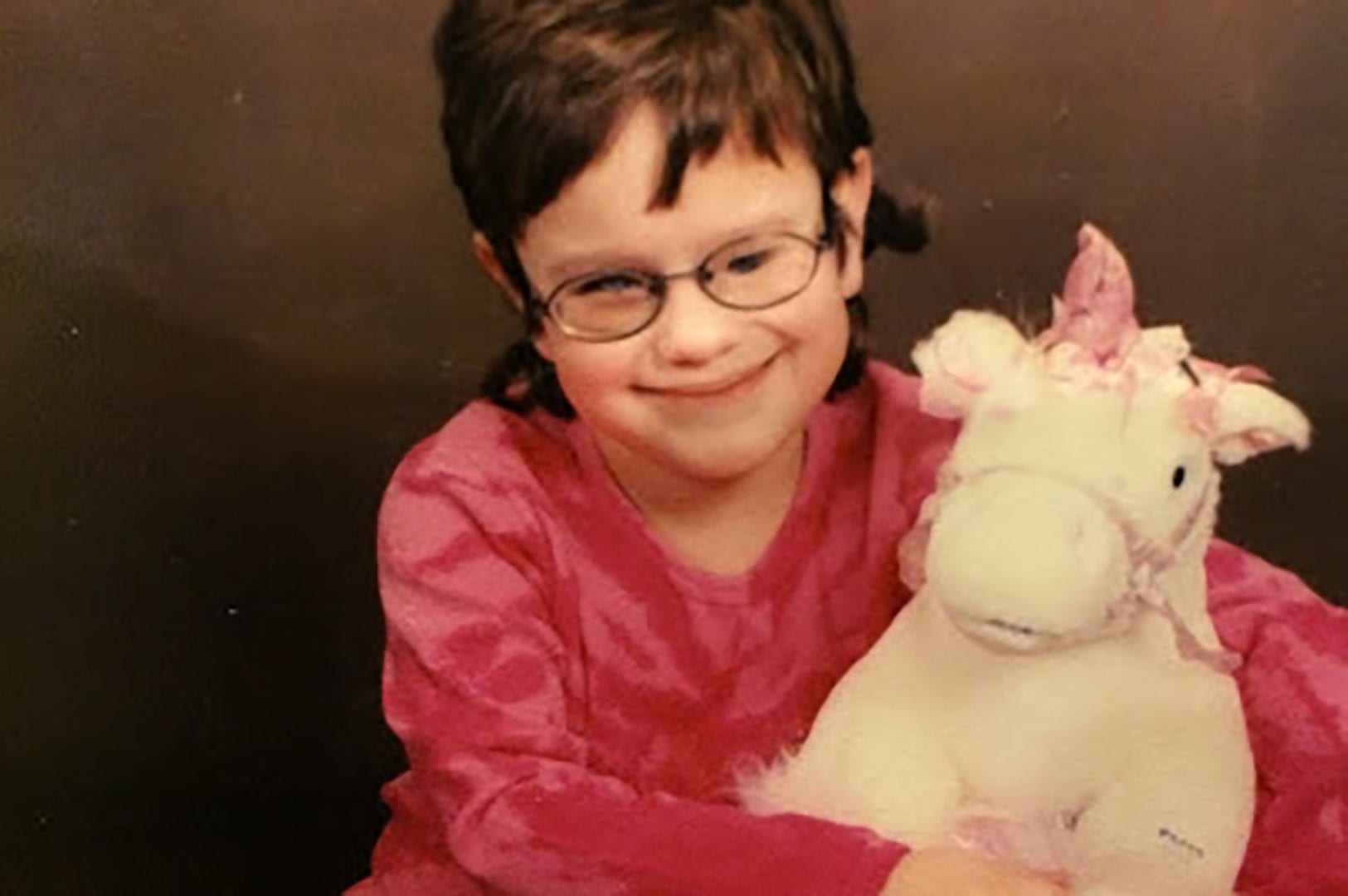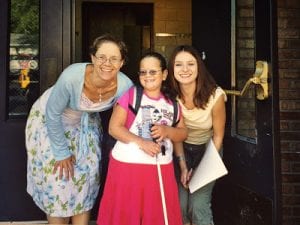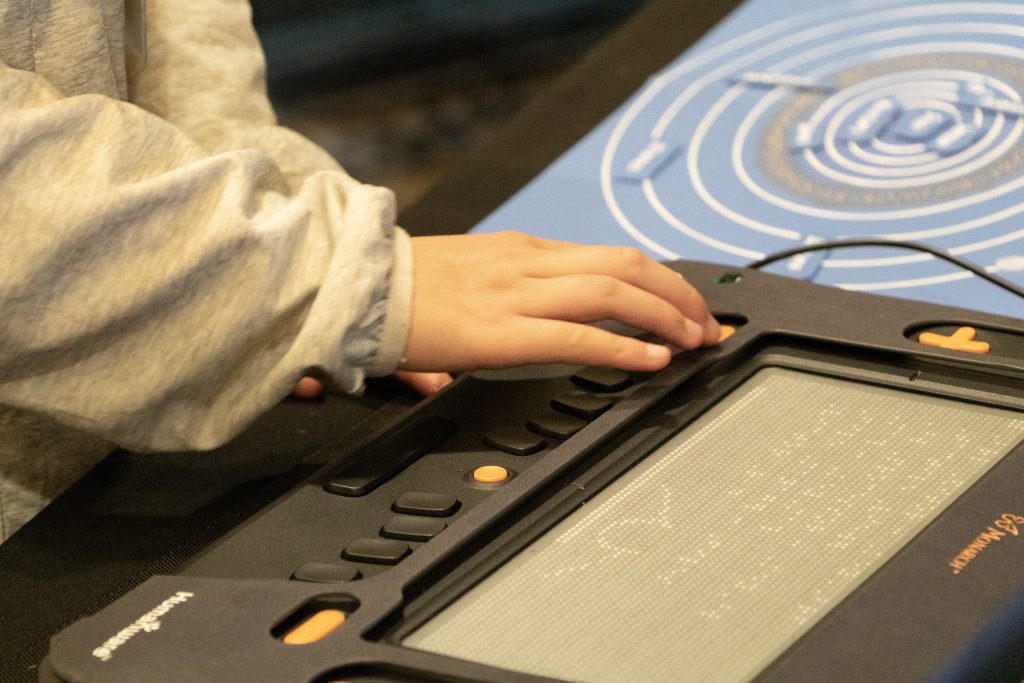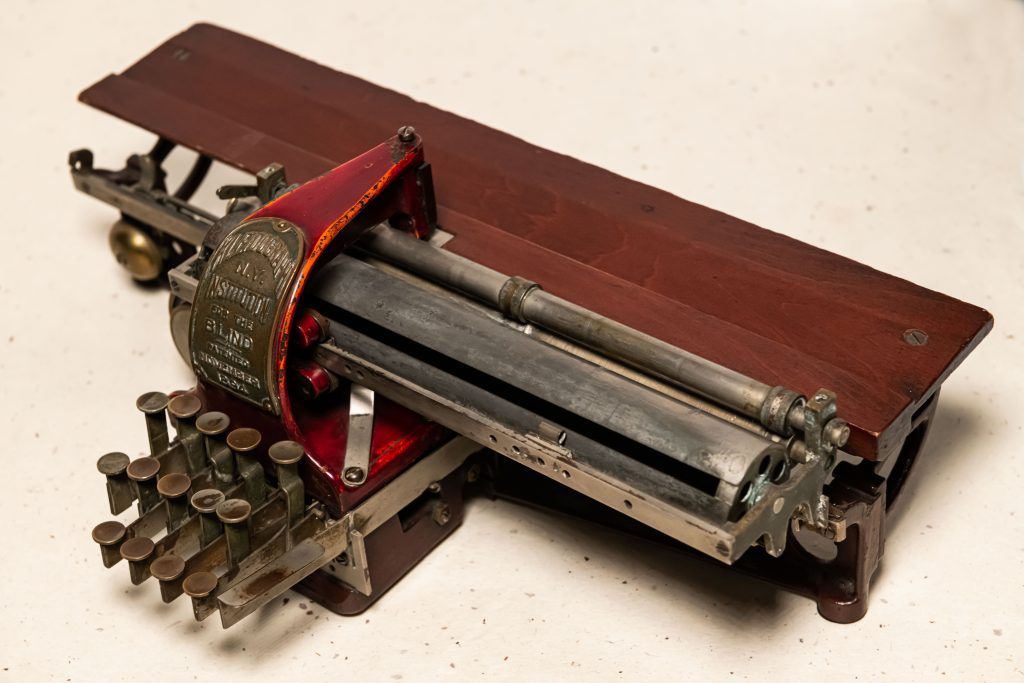Jessica’s Trail to Braille

This is part of our series on the importance of braille literacy. We asked braille readers about their introduction to the braille system and how braille has changed their lives. Find tools and resources to support braille literacy in our toolkit blog.
The sensitive pads of my fingers skated across thick pieces of paper, eager to understand what the bumps beneath them meant. When I was five years old, I learned the Braille code, which opened up a whole new world for me, a world full of words that could be touched and books that could be read in the dark. Seventeen years later, I have cultivated my Braille skills and continue to appreciate this innovative form of reading and writing.
My Braille classes began every morning in Mrs. Dandsdil’s kindergarten class at Salt Creek School in Villa Park, Illinois. The classroom contained students ranging anywhere from partial vision to none at all. Mrs. Dandsdil was patient as she helped the kindergarteners learn grade 1 and the first graders learn grade 2 Braille. Mondays were my favorite day of the week. My friends and I would sit at the white table in the back of the room and type out our Weekend News on Perkins Braillers. Composing two or three short paragraphs each week taught me how much I loved Braille and how much I loved telling stories to others.

Without Braille, I wouldn’t have the means to understand the joy of being able to read a tangible book, to feel paragraph breaks and punctuation marks underneath my fingertips. My imagination would not have stretched to its limits had I not decided to crack open books nor would I understand the euphoria that comes with writing my own words down. Braille has given me the ability to pursue my passion, writing. Currently, I am using Braille to write and edit a young adult fantasy novel, a novel that I hope to be able to circulate to Braille readers so that they, too, can discover new worlds. Braille changed my life and I hope it continues to do so for generations to come. A few years later, I discovered the Harry Potter series by J. K. Rowling, the first four books perched on the top shelf in Ms. Edwards’s fourth-grade classroom at Schwartz Elementary. My friend Hannah was a big fan of the series and after a little bit of encouragement from my teacher, I started reading the first book during silent reading time. My fingers moved so quickly across the pages that I ended up taking home a new volume every night. Stumbling upon these books taught me how much I loved fantasy novels. They challenged me to read above my reading level. In these stories, I found myself relating to characters my age. I wanted to be as smart as Hermione and as brave as Harry. I wanted to be a loyal friend like Ron. Above all, I wanted to fight on the side of good and defeat my enemies.
What’s your braille trail?
Share your story to braille literacy with us to be featured in our braille literacy series: communications@aph.org
Jess Minneci is a senior at Seton Hill University and an intern at APH. She is a three-time National Braille Challenge participant and has previously volunteered with ACB. She is a poet and aspiring novelist who enjoys filming youtube videos about young adult novels and spending time with her guide dog Joyce.
Share this article.
Related articles

How APH’s Partnership with the DAISY Consortium Assisted with the Development of eBraille
When APH began looking for partners to help create eBraille, we searched for an organization that was also passionate about...

eBraille: Inception to Reality
A new file standard will soon be available for braille readers! Created by APH and partners around the world, eBraille...

Blindness History Basics: History of Braille Writers
When fifteen-year-old Louis Braille presented his tactile system of raised dots in 1824, he hoped the new system would provide a...
